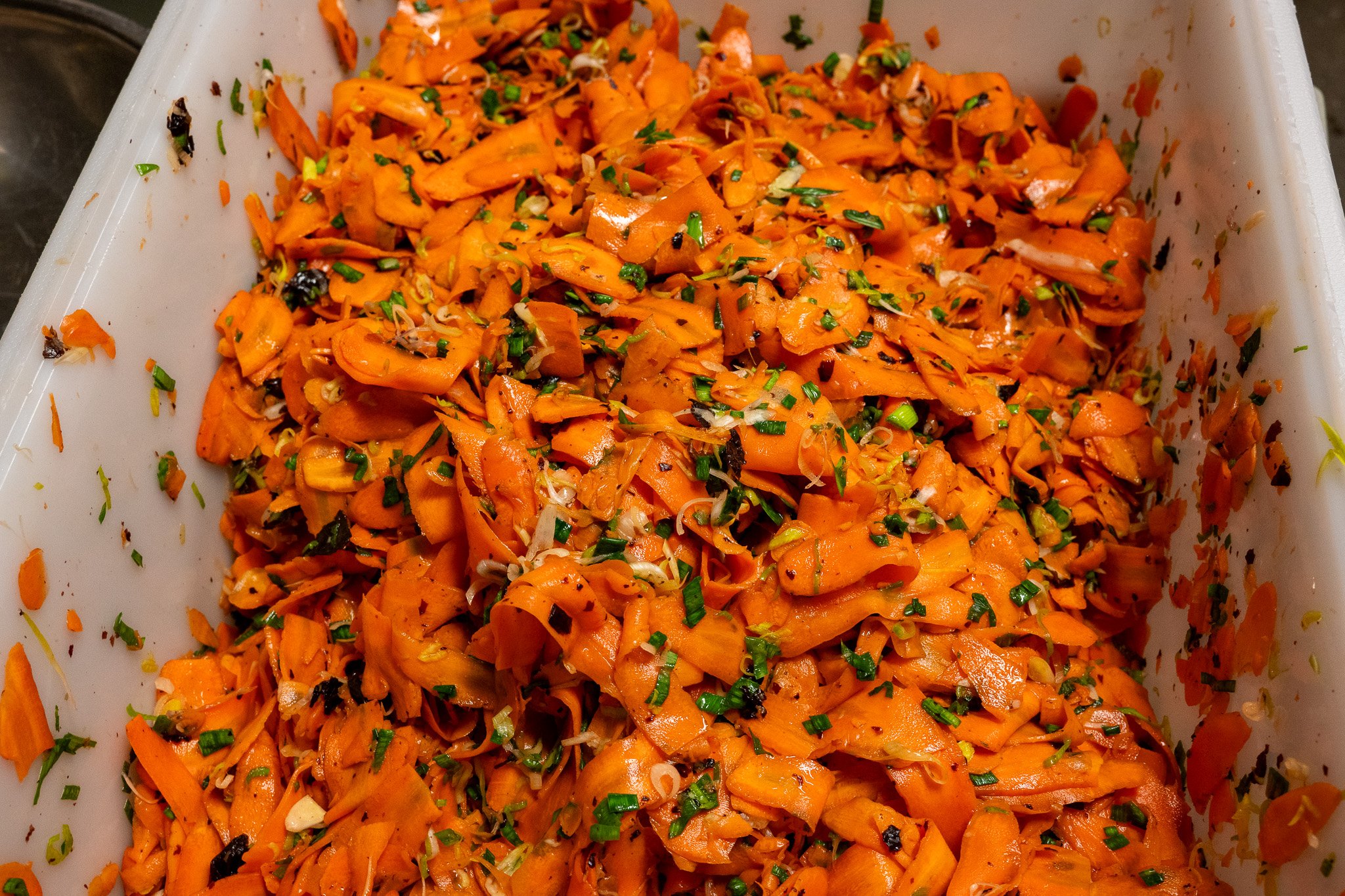Rice & Pickles March 2 & 3
You can click on any of components of the bowl above to identify them. Scroll down for more detail.
We always begin the bowl with a 50/50 blend of short-grain brown and sweet brown rice, sticky or glutinous brown rice, grown by the Lundberg Family here in California. We cook our rice in a Donabe. Donabe are a family of Japanese clay cooking vessels. The Donabe we use is called a Kamado-san and is specifically designed as a rice cooker. Our Donabe comes from Iga, Japan, and has been made by the Nagatani-en family for 5 generations. Iga is a great location for Donabe making because the clay body that is found in and around Iga has a high microscopic fossil content, which results in superior heat retention in the clay products that come out of the area; so, not only is the Donabe a beautiful and effective rice cooker but it also acts a warmer as it's very slow to cool once it has come off of the flame. We top the rice with a gomashio or sesame salt. Our take on this traditional Japanese toasted sesame and salt condiment is that instead of using salt, we use either one of our ferments that we have dried and powdered or a seaweed. Today, we have toasted sesame seeds and dried and powdered beet pulp left over from juicing beets for kombucha, which gives it color, and we use Sea Lettuce instead of salt.
Our Sauerkraut Salad made with green cabbage fermented with Beets, Carrots and Ginger
Spinach mixed with Jalapeno Kasuzuke, a one year fermentation of jalapenos in sake lees.
Kasuzuke Jalapenos
Kohlrabi
Kohlrabi shaved on a mandolin and mixed with our Indian Pickled Limes- an 11-month fermentation of limes; they are our version of an Indian achar, like the mango pickle you might get on the side of your dosa. The limes are minced, mixed with the Kohlrabi, and left to sit for a few days
Indian Pickled Limes
Bettarazuke. A month ago, we made a mash made from rice, rice koji, and barley shochu; we put dried and salted daikon in the mash and let it ferment for about a week. That daikon appeared on the bowl last week. This week we put shaved kabocha squash into that same mash.
Carrots fermented with Dulse and Green Garlic
Daikon pickled in the Brine from our Umeboshi plums, also called Ume Vinegar or Umezu










